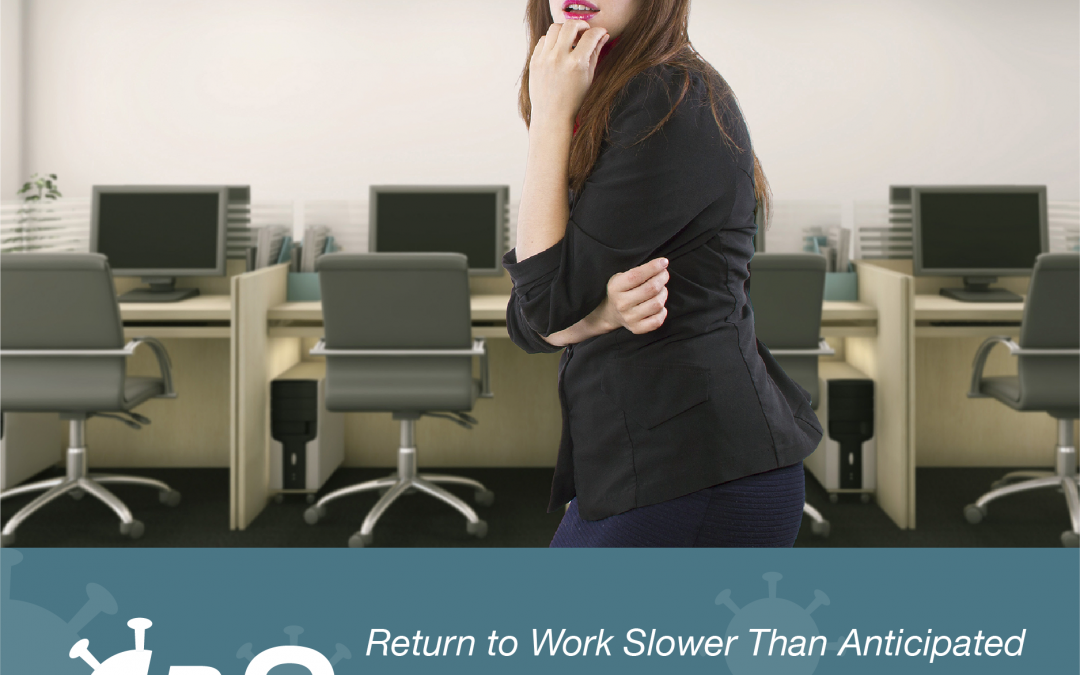Now, roughly six months into the pandemic, we want to share some of the takeaways and emerging themes based on conversations we’ve been having with clients in respect to office re-occupancy and COVID-19.
Although the rate of infection has decreased since the end of April and beginning of May (when the peak amount of COVID-19 cases were seen in Ottawa), the fear of a second wave is very much top-of-mind for people as we close out the summer and schools begin to reopen. Real Strategy has been hearing that people are not returning to the physical workplace to the extent that was originally thought and anticipated by their organizations. This begs the question: Are offices not safe enough?
Help us better understand what the “return to work” is looking like for you by taking our survey here.
Initial discussions with clients had led us to believe that most of their employees would soon be returning to the office (albeit still in a reduced capacity). But lately, the conversation has changed. These same clients are now reporting that fewer and fewer people are eager to return to work for fear of a second wave or the potential that cold and flu season sets off false alarms every time someone has a runny nose. In a recent conversation with a senior executive from a downtown law firm, they mentioned that there are only about 10 people in-office at any given time in a beautiful new space that was recently built out to accommodate over 100 people.
Another tech executive found that employees that wanted to come back into the office, for the social benefits of being able to connect and collaborate more directly, are realizing that a reduced capacity office means there’s not really anyone there to socialize with. And so they go back to the home office. These anecdotes underline the impact we at Real Strategy have been alluding to regarding the inevitable decreasing demand for physical office space and the impact this will have on rental rates and vacancy as organizations re-evaluate their needs. Real Strategy has also noted how these impacts will be long-lasting and likely spur transformational change for urban commercial real estate (especially in high-rise office buildings) for years to come.
As we move into cold and flu season, where people getting sick is the norm, what does the chain of events look like when a co-worker, or even a child of a colleague, gets sick with a cold? Must we (and our colleagues?) operate as if we have COVID-19 until cleared by testing? And what does this fear of risk mean to the larger commercial real estate story we’ve been following and trying to forecast? Let’s stick with the example of a co-worker’s child having a cold.
First, the child has to stay home from school and so must a parent. A reverse pyramid effect begins to show when you follow the logic down the line as co-workers of that parent might feel that they have to isolate and perhaps their families. Likewise, other children who might have caught a cold via the first child now have to stay home along with their parent(s). You can begin to see the potential for disruption when this chain is played out on a large scale. Although the full extent of potential impact is not fully known or mapped out currently, it is intuitively large and further highlights how complex the return to work strategy for physical office space is.
In the current COVID context where something as common as a cold has the potential to shut down multiple workplaces, the idea that the commercial real estate landscape is going to undergo long-term changes and impacts — particularly in office buildings — should not be understated. Furthermore, as this shift occurs, will it change the long-term demand for downtown office space on a permanent basis if your colleagues and clients aren’t in a hurry to come back? There are plenty of people who may feel cooped up at home, want to see their peers in-person again, even prefer the office energy, but many of these same people are still likely to play it safe before heading back to the office.
Market conditions and rental rates are always changing in the current climate. This is where an experienced advisor and broker comes in — like us! Contact Real Strategy Advisors today and let us provide a market analysis or market-test your current agreement so you know what options are available to you.
Click here to read the inaugural issue of Real Spaces Magazine where we share our thoughts alongside real statistics regarding the impact of COVID-19 and Ottawa’s commercial real estate sector.

